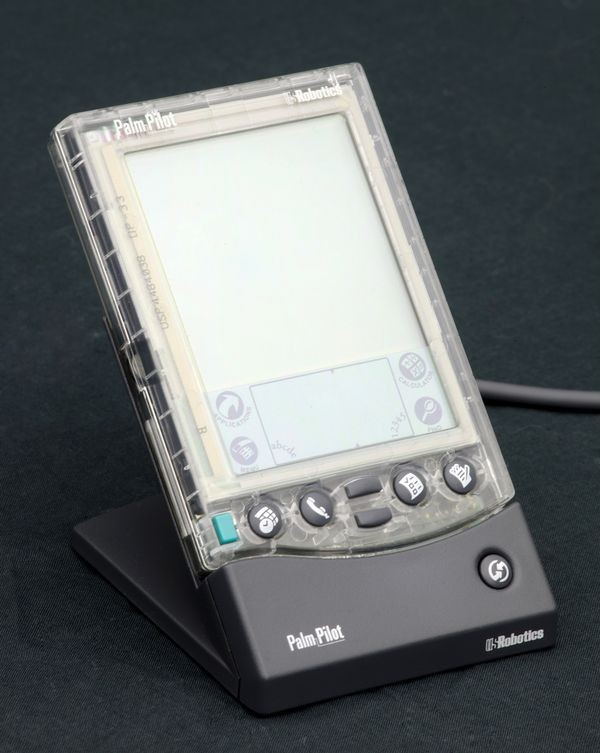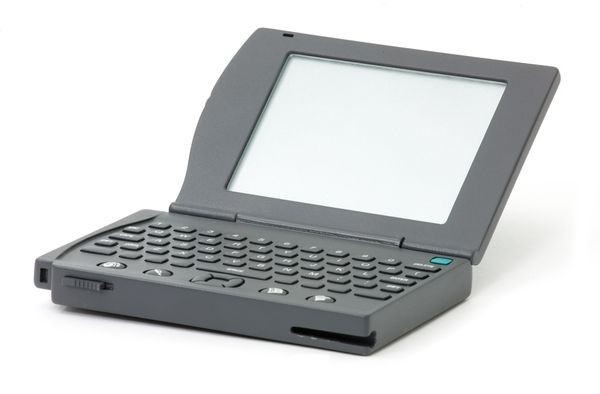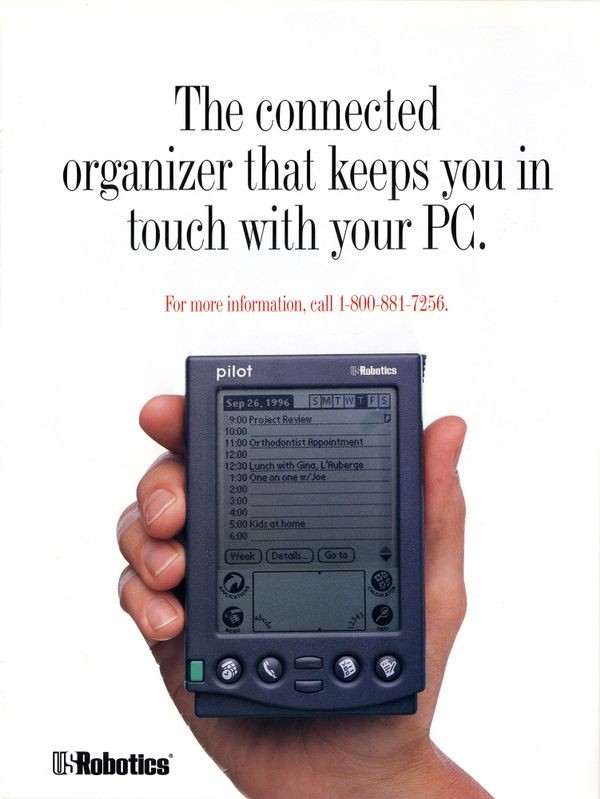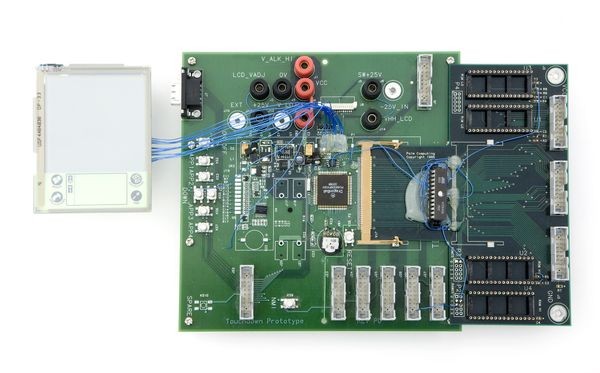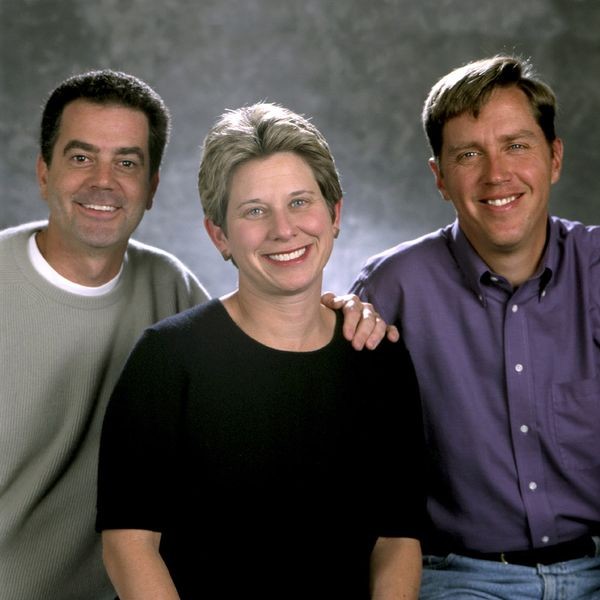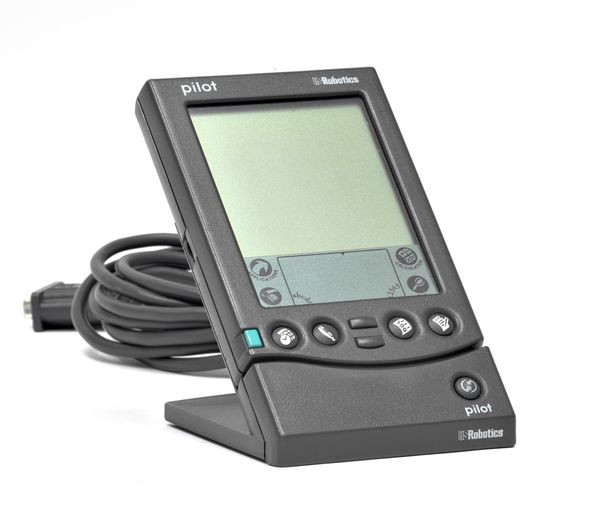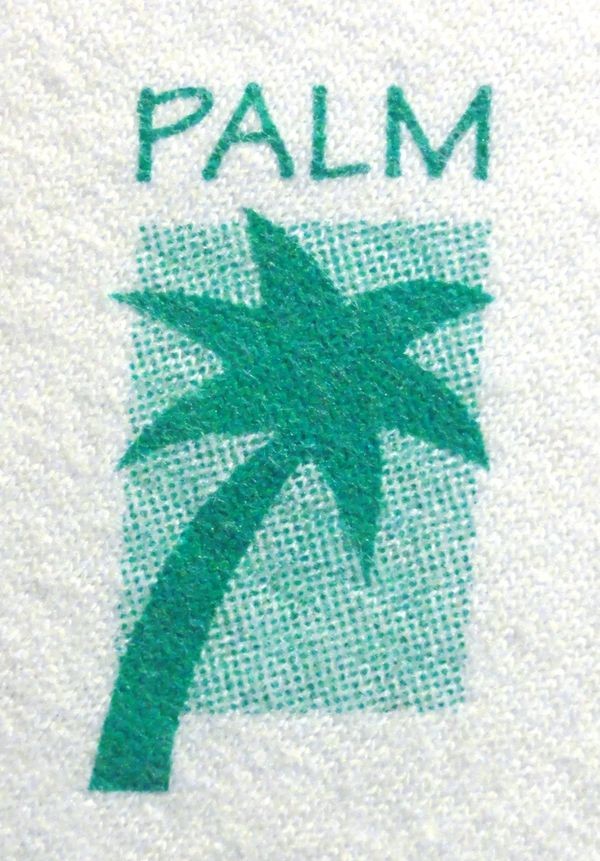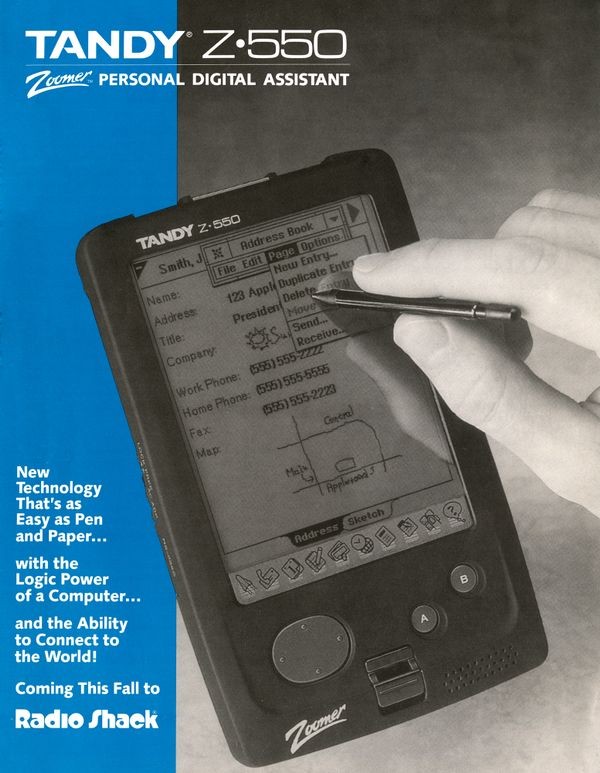The PalmPilot
PalmPilot handheld computer
The PalmPilot elegantly tracked contacts, notes, to-dos and events, all synchronized to your desktop computer using the included cradle. It was a general-purpose computer used for specialized applications, and was small enough to fit in a shirt pocket.
The PalmPilot
The PalmPilot was the first wildly popular handheld computer. Its success helped bridge the previously separate worlds of the electronic organizer, the PC, and later, the mobile phone.
The PalmPilot succeeded by redefining the handheld as an accessory to the personal computer, not its replacement. Winning features included seamless one-button synchronization with the PC, handwriting recognition that really worked, easy-to-use organizer functions, fast responses, pocket size, and an affordable price of $299.
PalmPilot wooden model
Jeff Hawkins tested the PalmPilot’s design with this model, using a chopstick for a stylus. He took pretend notes in meetings, and counted the steps it took to perform common tasks.
View Artifact DetailModel for keyboard-based PalmPilot
Would PalmPilot users really want to enter text with a pen? Palm designers weren’t sure. They tested this keyboard-based design as an alternative.
View Artifact DetailPalmPilot advertisement
U.S. Robotics sold about a million PalmPilots in the product’s first 18 months.
View Artifact DetailThe Story of Palm: Jeff Hawkins
Chapter Menu
1. The Story of Palm
2. Main features
PalmPilot prototype
This “tethered prototype” let engineers develop software for the PalmPilot before production units were available.
View Artifact DetailThe Bumpy Road to Success
Some Palm predecessors, like the Psion and HP’s LX series, were modestly successful. But several well-financed and much-hyped attempts at pen-based handhelds, including Apple’s Newton and the EO Personal Communicator, failed in the marketplace, costing investors about a billion dollars. Palm’s own first handheld, the bulky Zoomer, also flopped.
It wasn’t a good time to seek funding for a new attempt. Palm had money to develop the PalmPilot, but not enough to launch it, so the company agreed to be acquired by US Robotics. PalmPilot’s surprise success changed the handheld category forever.
The Story of Palm: Donna Dubinsky: Just Have to Ship the Product
Chapter Menu
1. Just Have to Ship the Product
2. Troubles Raising Money
3. The Pen is not the Point
Simplified alphabet for “Palm Graffiti”
Graffiti represented a gamble that, to improve accuracy, users would learn a new way to write using simplified letter shapes, with every letter in the same box. Experts could write 40 words a minute!
View Artifact DetailThe Story of Palm: Ed Colligan: One Button
Chapter Menu
1. One Button
2. Dialing by Name
Packaging for “PalmConnect”
PalmConnect synchronized data between handhelds and desktop PCs. It gave the Palm founders a crucial insight for the later PalmPilot: that the handheld should complement the PC, not replace it.
View Artifact DetailEnvisioning a Handheld Computer
After designing the first commercially successful tablet computer at GRiD systems, Jeff Hawkins founded Palm to create the simple, hand-held version he was convinced consumers wanted.
Hawkins’s original passion, however, was neuroscience and machine intelligence. After a 25-year detour designing portable computers, he returned to his first love.
Palm Computing leaders
Palm Computing was founded by mobile computing pioneer Jeff Hawkins (right), who recruited Apple veteran Donna Dubinsky as CEO and Ed Colligan, formerly of Radius, as head of marketing.
View Artifact DetailCasio Zoomer
Zoomer was a joint project of Casio, Palm, GeoWorks and Tandy. It had a touch screen, a graphical user interface and support for third party applications. But it suffered from slow speed and high price.
View Artifact DetailPalmPilot
Palm's leaders, frustrated with the unwieldy Zoomer, for which they were developing software, complained to investor Bruce Dunlevie. He responded that if they were so sure what consumers wanted, “why don’t you…go do it yourselves?” The successful PalmPilot was the result.
View Artifact DetailT-shirt with original Palm logo
The founders chose the name “Palm” referring to the palm of a user’s hand, not the tree. So the early tree logo was a visual pun.
View Artifact DetailZoomer advertisement
Zoomer, the result of a joint effort between Casio, Palm, GeoWorks and Tandy, was big, clunky and slow. But it taught Palm valuable lessons about what customers wanted in handheld computers.
View Artifact Detail